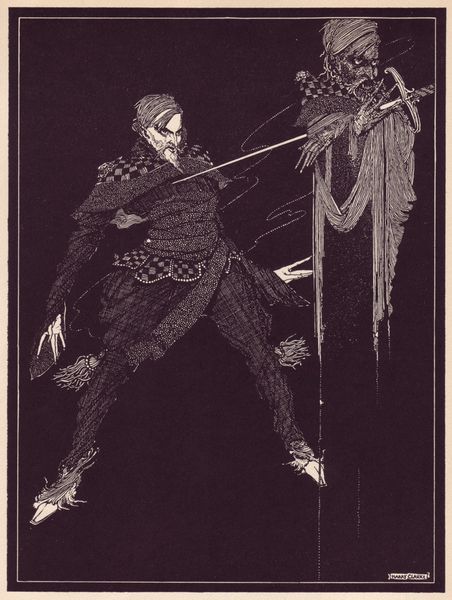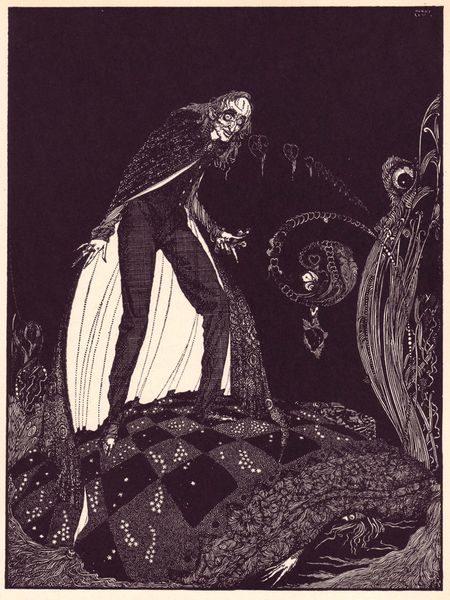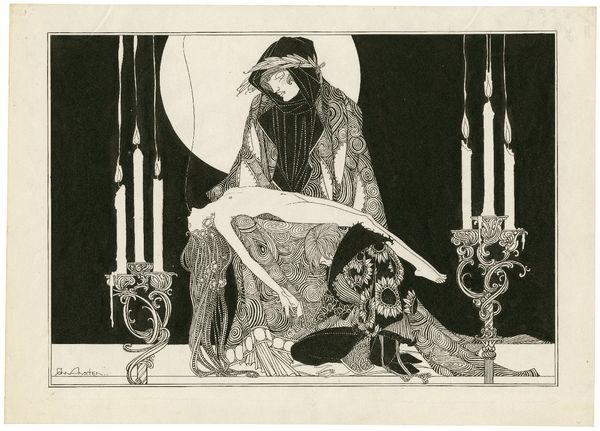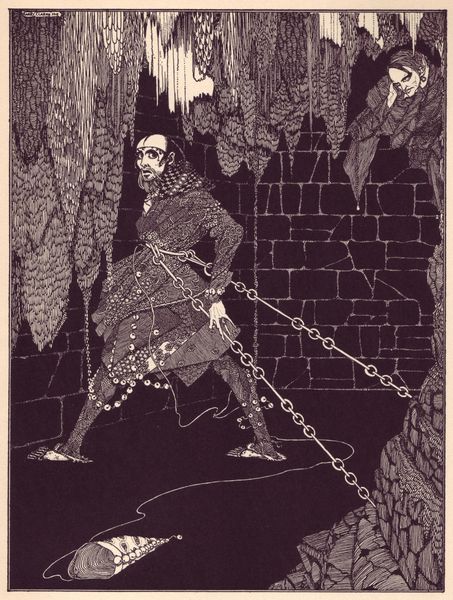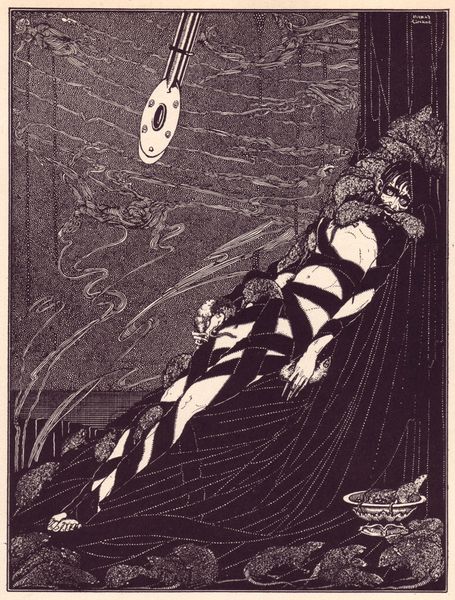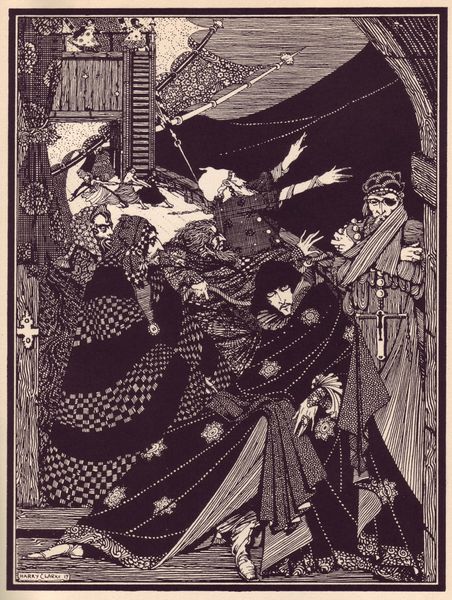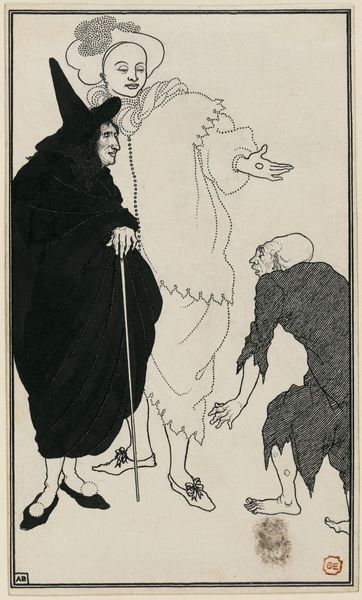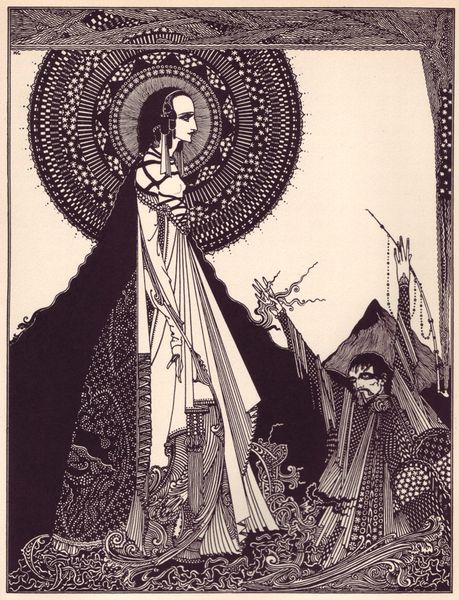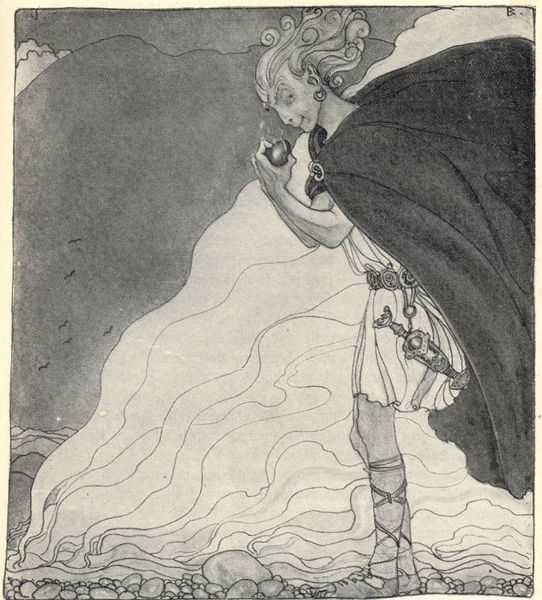
drawing, ink
#
drawing
#
pen illustration
#
figuration
#
ink
#
costume
#
line
#
symbolism
#
history-painting
Copyright: Public domain
Curator: Take a look at this pen and ink drawing titled "Hamlet" by John Austen. While we don't have a precise date for its creation, it resonates with the artistic styles of the early 20th century. What are your initial thoughts? Editor: A feeling of intense theatricality strikes me. The stark black and white, the dramatic gestures, and the almost obsessive detail of the linework create a sense of heightened drama, fitting for Shakespeare. Curator: Absolutely. Austen, deeply involved in the cultural landscape of his time, taps into a rich history of representing Shakespearean themes. The tradition of illustrating Shakespeare was long established, used to solidify literary canonicity but also, crucially, to give agency to successive generations of artists. Austen’s interpretation clearly positions him within that continuum. Editor: Yes, the symbolism is heavy and consciously employed. Note the figure in the elaborately patterned robe— the skull mask, the keys. The overall aesthetic reminds me of Aubrey Beardsley’s illustrations, but with a somewhat harder edge. There is less languor, more implied violence. Curator: I think you’re spot-on regarding Beardsley. Austen positioned himself consciously in relation to figures associated with Aestheticism, but always pushing further, sometimes towards a bolder social commentary. One could see, in the sharp contrast between light and shadow and that jagged shape dominating the left side, echoes of social anxieties that were becoming more apparent in England at the time this drawing was made. Editor: The solid black shape works almost like a void, contrasting with the manic energy of the linework elsewhere. It almost swallows the Hamlet figure, whose fearful gaze indicates the psychological weight of impending fate. What seems like a curtain also seems a door or dark landscape. Curator: It's a compelling reading. Art often operates this way, drawing inspiration from what it sees and also informing society in return. Editor: Indeed, even through seemingly simple compositional tools, it holds complex reflections of existential turmoil. Curator: The intensity of vision is perhaps what is most gripping in Austen’s body of work, particularly within the art historical moment to which it belongs. Editor: Agreed, Austen offers an image world packed with expressive energy. A brilliant exercise in illustration that functions as a kind of emotional report, too.
Comments
No comments
Be the first to comment and join the conversation on the ultimate creative platform.
